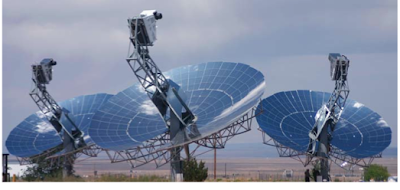Calico Solar Right of Way In Jeopardy
Last month I wrote about the Calico Solar power project because the Bureau of Land Management (BLM) granted Tessera Solar LLC permission to build a solar facility on pristine desert that Tessera never had the capacity to build in the first place, according to information put forward in legal proceedings. Tessera Solar then sold its permission to build on 7 square miles of public land--called a "right-of-way" grant (ROW)--to a company called K Road Sun. The BLM now considers the Calico Solar ROW to be "inoperative," and will not allow construction to proceed on the pristine desert until a new environmental analysis is completed, according to information provided by the BLM to the US District Court on 6 June.
I cant blame the BLM for taking a more cautious approach. BLM rushed to approve the project for Tessera Solar last year, and then watched as Tessera admitted that it could not build the SunCatchers and sold the ROW to another company. Now K Road Sun is asking for a repeat of last year -- a speedy approval by Federal and State officials ignoring the environmental damage and the fact that SunCatcher technology poses significant hurdles to the viability of the project.
The California Energy Commission (CEC) is still attempting to accommodate the amended application despite continuing concerns about K Road Sun's ability to build the project.
The Calico Solar power project should never have been approved in the first place. The site is home to a thriving desert ecosystem, with dozens of endangered desert tortoises, a rare desert wildflower, and bighorn sheep.
I cant blame the BLM for taking a more cautious approach. BLM rushed to approve the project for Tessera Solar last year, and then watched as Tessera admitted that it could not build the SunCatchers and sold the ROW to another company. Now K Road Sun is asking for a repeat of last year -- a speedy approval by Federal and State officials ignoring the environmental damage and the fact that SunCatcher technology poses significant hurdles to the viability of the project.
The California Energy Commission (CEC) is still attempting to accommodate the amended application despite continuing concerns about K Road Sun's ability to build the project.
The Calico Solar power project should never have been approved in the first place. The site is home to a thriving desert ecosystem, with dozens of endangered desert tortoises, a rare desert wildflower, and bighorn sheep.




Comments
Post a Comment